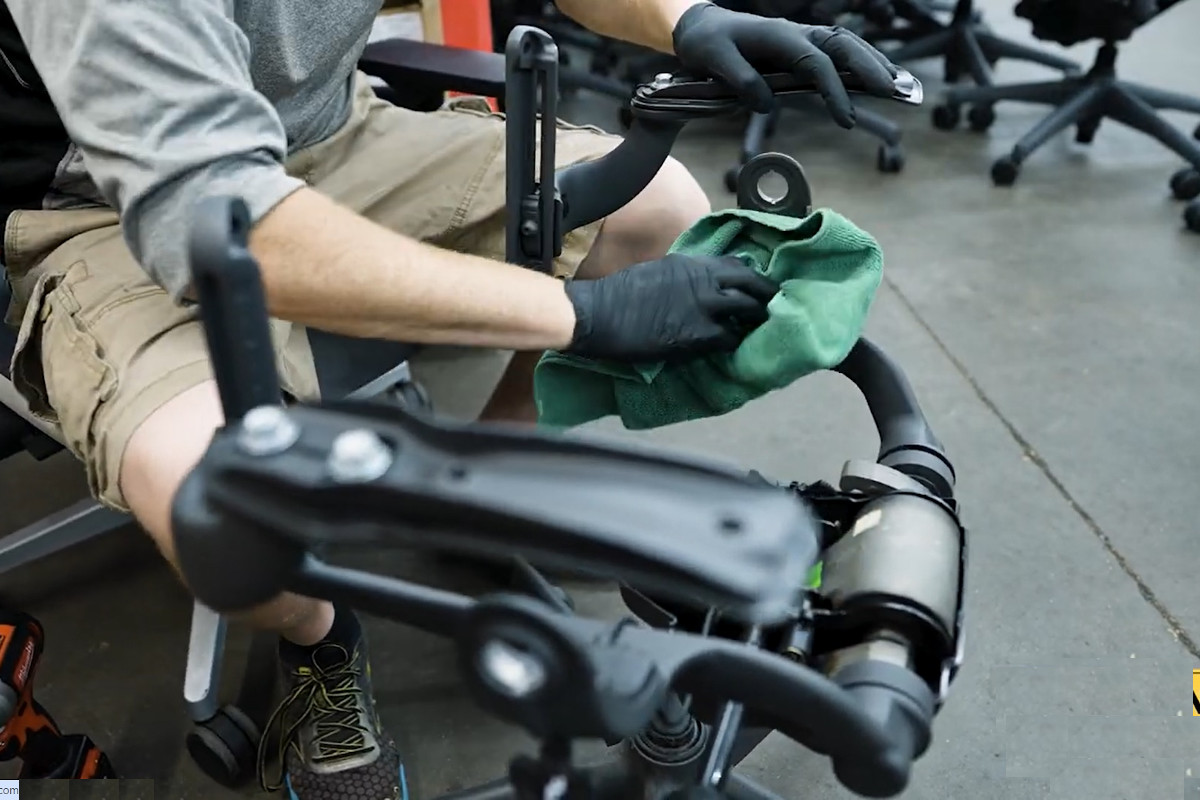One of the most important and often underestimated office chair components is definitely the armrest.
A correct choice of armrest improves well-being in the office.
In this short GUIDE we will see the main types of armrests available on the market.
Armrests are essential elements of an ergonomic office chair.
They allow the seated person to relieve the pressure on the seat, avoiding pain in the buttocks.
Furthermore, in the use of PC keyboard or in the increasingly frequent use of smartphones / tablets, the armrests reduce muscle tension on shoulders and neck.
Before listing the various types of armrests, let’s make a general consideration regarding the upper part, called pad, and the structure.
As for the pad, there are two types of pads: soft pad, in materials such as PU or TPU, or rigid pad, in plastic or steel material. The soft pad obviously offers superior comfort.
The armrest structure can be entirely in plastic or metal, usually aluminum or steel.
In terms of robustness, the two solutions are often the same, but the metal structure allows for a polished or chromed effect that is aesthetically more valuable.
As regards the functional characteristics of the armrest, on the other hand, we can distinguish the following types of products:
FIXED ARMREST
Fixed amrests for office chair provide a non-adjustable support for the user’s arm.
This type of armrest is usually used in entry level products or in executive armchairs, which are often intended for a not particularly intensive use and in which the importance of the image often prevails over the technical characteristics.
Several items offered by SbS belong to this category, for example the 1400 in steel o the 695 in plastic.
HEIGHT ADJUSTABLE ARMREST
The height-adjustable armrest allows you to adjust the height of the arm support point.
This adjustment is very important both when using and not using the armrest.
That is, a good adjustable armrest should be in the correct position under the arm when needed and yet should not hinder the movement of the chair, especially under the desk, when not needed.
There are different types of mechanism to adjust the armrest’s height; the main ones are:
– with button: by pressing a specific button the pad is free to move in height, by releasing the button the armrest locks in the desired position
– up & down system: there are no buttons in the armrest, and by pulling up the pad is free to go up; when the armrest reaches the highest position (UP) the mechanism allows the pad to “automatically” go down to the lowest position (& DOWN)
Items such as our ARGA1B00 belong to this category with button mechanism, and the 397 or 375 with the up & down mechanism.
2D, 3D, 4D ARMREST
The 2D, 3D and 4D armrests are components that can have respectively 1, 2 or 3 independent adjustments in addition to the height adjustment.
D basically stands for DIMENSION, or regulation.
These additional “dimensions”, that is, these independent adjustments can be:
– Width adjustment
– Rotation of the pad
– Translation of the pad
These adjustments make it possible to position this component for office chair in an optimal way according to both the physical characteristics of the user and the chair scope.

For example, a person with wide (or very narrow) shoulders will benefit from the armrest width adjustment that will allow him to keep his arm in a natural position.Another example: when using the keyboard, a pad that rotates and translates allows you to effectively rest your elbow on the armrest and to reduce shoulder and neck fatigue.
Armrests like 555 or 561 belong to this cathegory.
5D ARMREST
Armrests equipped with an asymmetrical pad that can rotate 180/360 ° are improperly defined as 5D.
By rotating the pad and being this asymmetrical, the possibility of supporting the arm offered by the armrest changes significantly, as if there was a further “dimension”.





